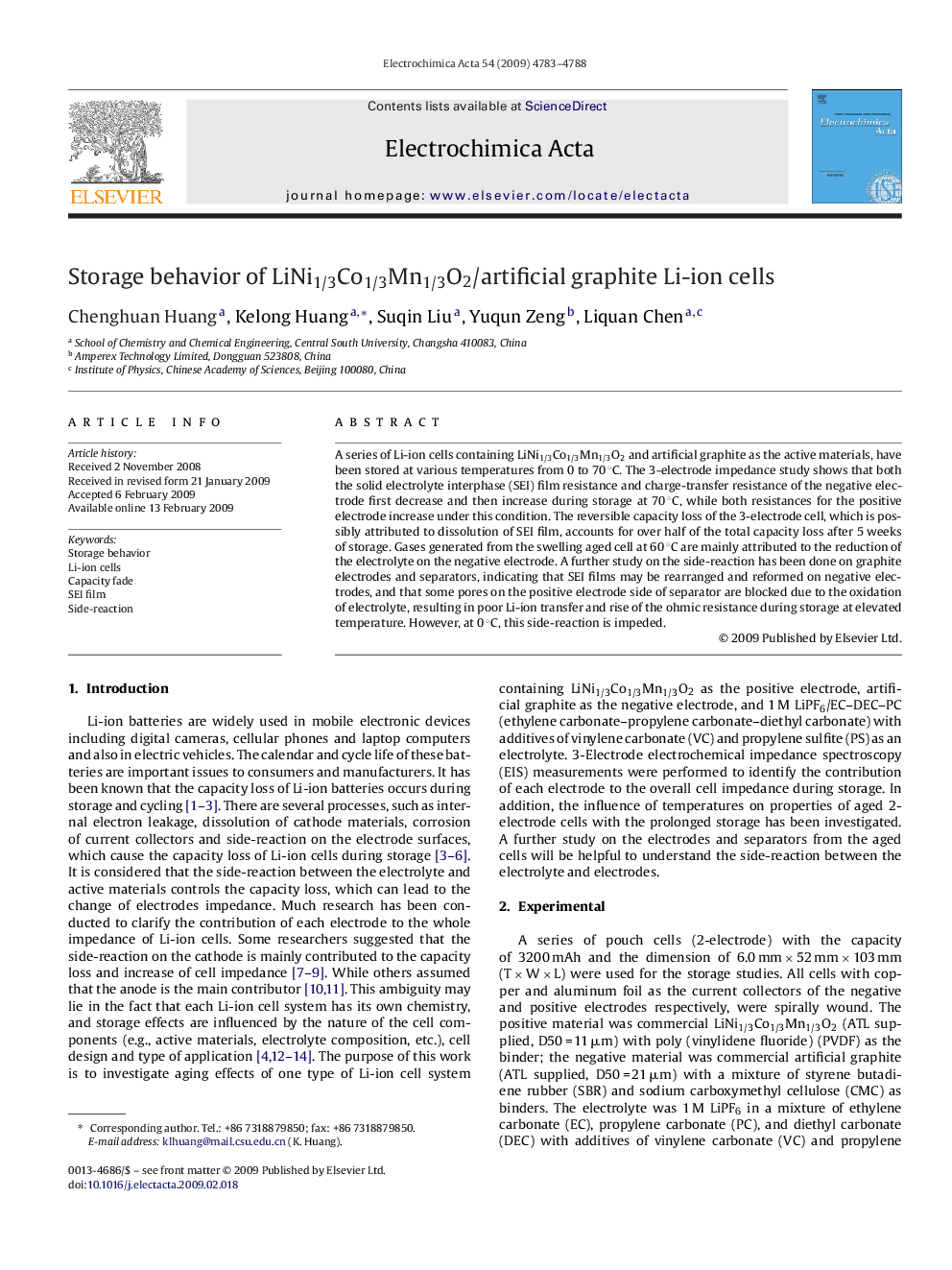| Article ID | Journal | Published Year | Pages | File Type |
|---|---|---|---|---|
| 192448 | Electrochimica Acta | 2009 | 6 Pages |
A series of Li-ion cells containing LiNi1/3Co1/3Mn1/3O2 and artificial graphite as the active materials, have been stored at various temperatures from 0 to 70 °C. The 3-electrode impedance study shows that both the solid electrolyte interphase (SEI) film resistance and charge-transfer resistance of the negative electrode first decrease and then increase during storage at 70 °C, while both resistances for the positive electrode increase under this condition. The reversible capacity loss of the 3-electrode cell, which is possibly attributed to dissolution of SEI film, accounts for over half of the total capacity loss after 5 weeks of storage. Gases generated from the swelling aged cell at 60 °C are mainly attributed to the reduction of the electrolyte on the negative electrode. A further study on the side-reaction has been done on graphite electrodes and separators, indicating that SEI films may be rearranged and reformed on negative electrodes, and that some pores on the positive electrode side of separator are blocked due to the oxidation of electrolyte, resulting in poor Li-ion transfer and rise of the ohmic resistance during storage at elevated temperature. However, at 0 °C, this side-reaction is impeded.
